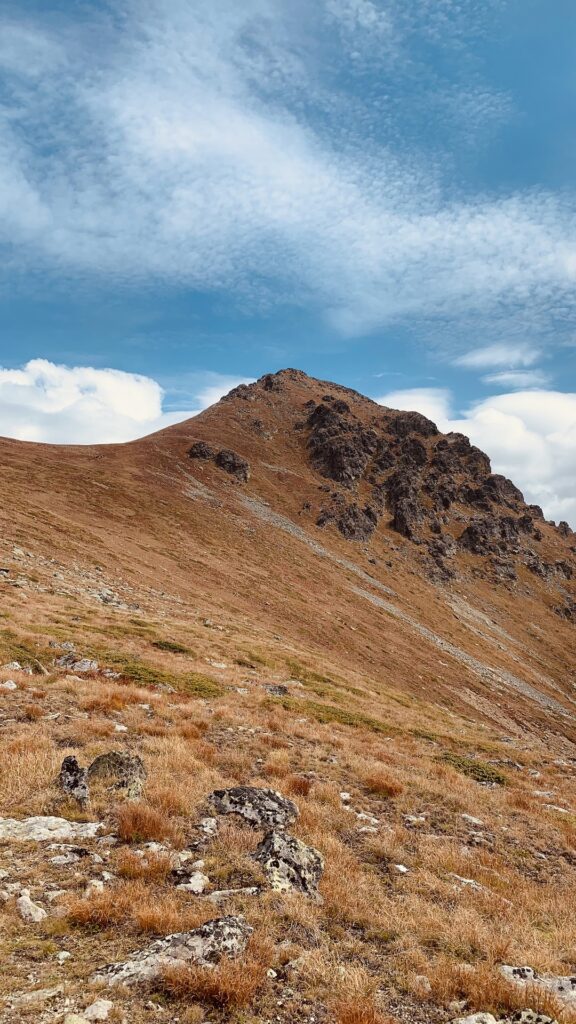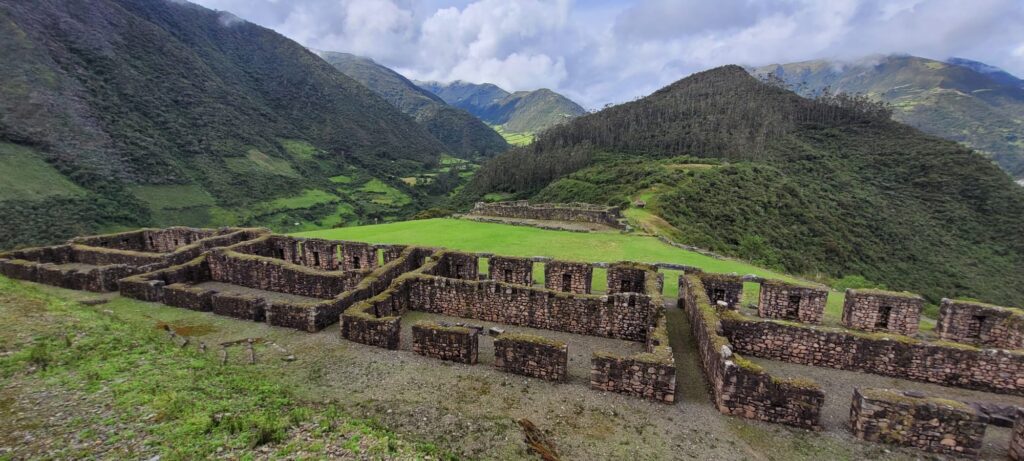Pristina was our favorite city to visit during our five-month trip to the Balkans. Maybe because it reminded us of home a bit. The city has a big city vibe even though it’s the capital of a country that is less populated than most capital cities in the world. Don’t get us wrong, it’s not as pretty as Paris or Venice, but what it lacks in beauty Pristina compensates with its atmosphere.
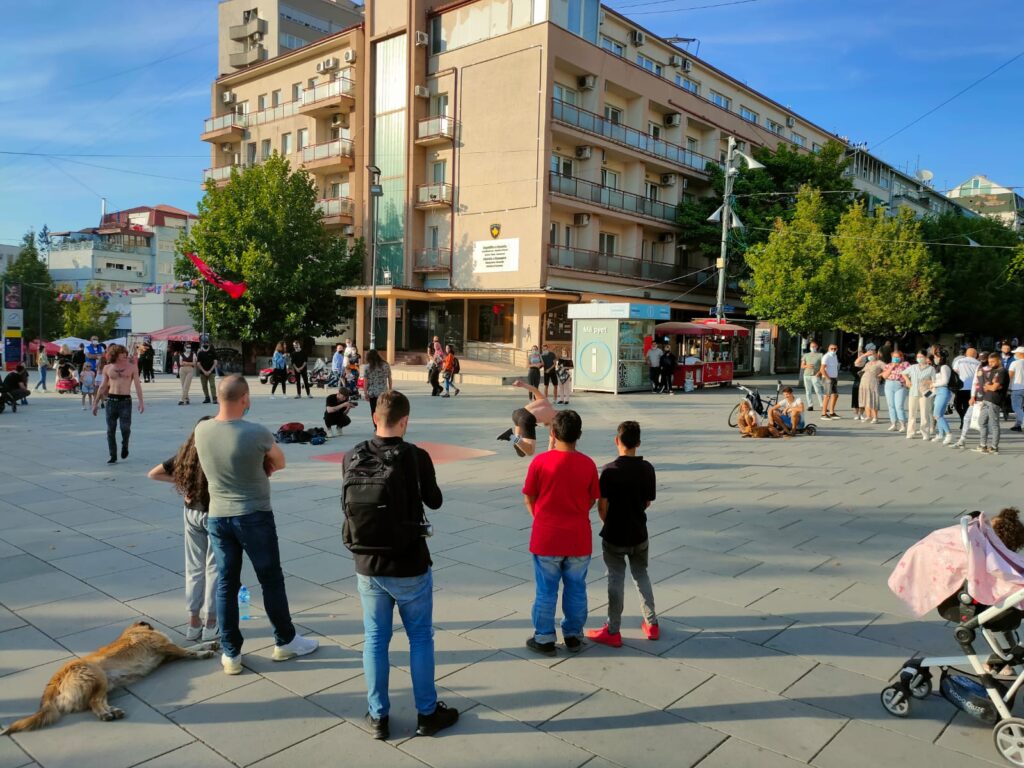
Adding to the pleasure of the city are its low prices and high-quality products. While even a low-budget traveler will enjoy his/her day without struggling to stay in the rims of the daily expenses.
We gathered our most meaningful experiences in the city and created what is, in our eyes, the perfect day in Pristina, the capital of Kosovo.
Where to Stay in Pristina
YellowHouse
YellowHouse in Pristina offers a clean, spacious one-bedroom apartment with a sunny balcony overlooking the main square and cathedral. With a central location, reliable Wi-Fi, air-conditioning, and a fully equipped kitchen, it’s a comfortable and quiet base for exploring the city on foot.
Prishtina Backpackers
Pristina Center Hostel
The most famous hostel in town and for a good reason, Pristina center hostel has everything we are looking for in a city hostel. It’s cheap, clean, has a great location and helpful staff. There is a big communal kitchen if you are on a budget and want to cook for yourself.
Start Your Day with an Elegant Cup of Coffee in Soma Book Station
Kosovars love their coffee, especially in Pristina. The coffee scene in Pristina is one of the coolest we have experienced in Europe. The city has a lot of quality cafés taking their beans seriously. But no doubt that the most elegant one is Soma Book Station.
Start your day sipping macchiato in their tranquil garden and mingling with the bohemian crowd.
In addition, they offer a variety of original breakfasts and some homemade cakes.
Pristina Bazzar
Located in the heart of the city, Pristina’s farmers market is a great place to experience the local life of the city. Typical of the Balkans region, the fruits and vegetables are delicious and fresh. Nothing is imported, and everything is grown seasonally.
We were traveling to Pristina in the summertime, and the market was full of peppers in different colors and types.
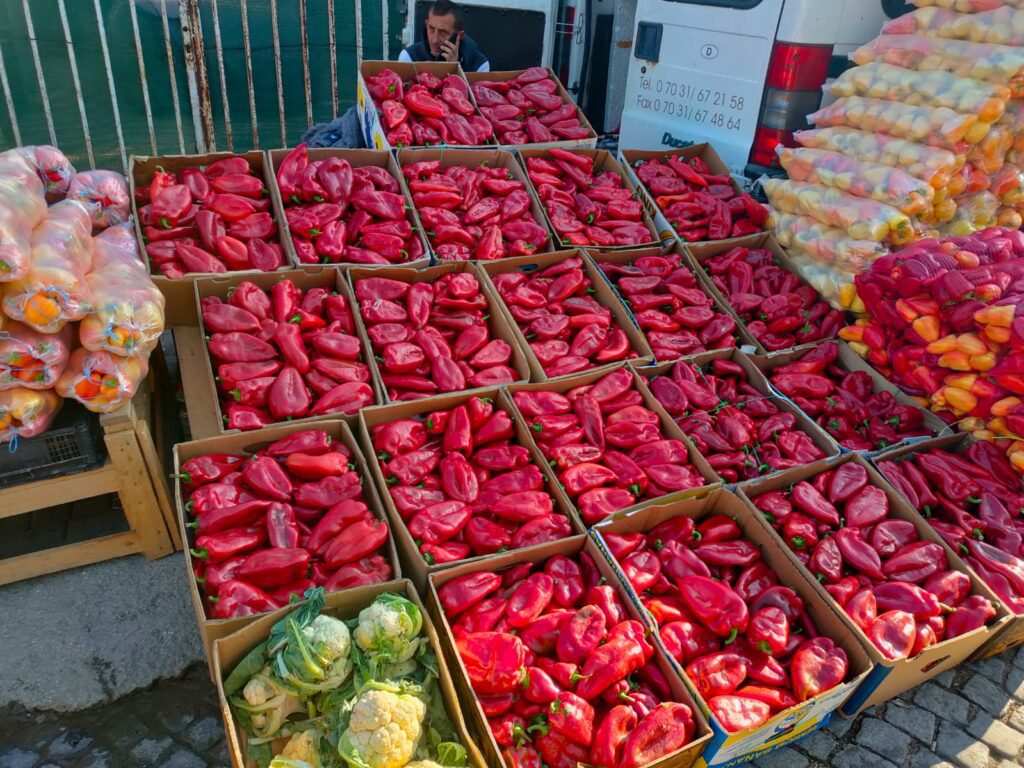
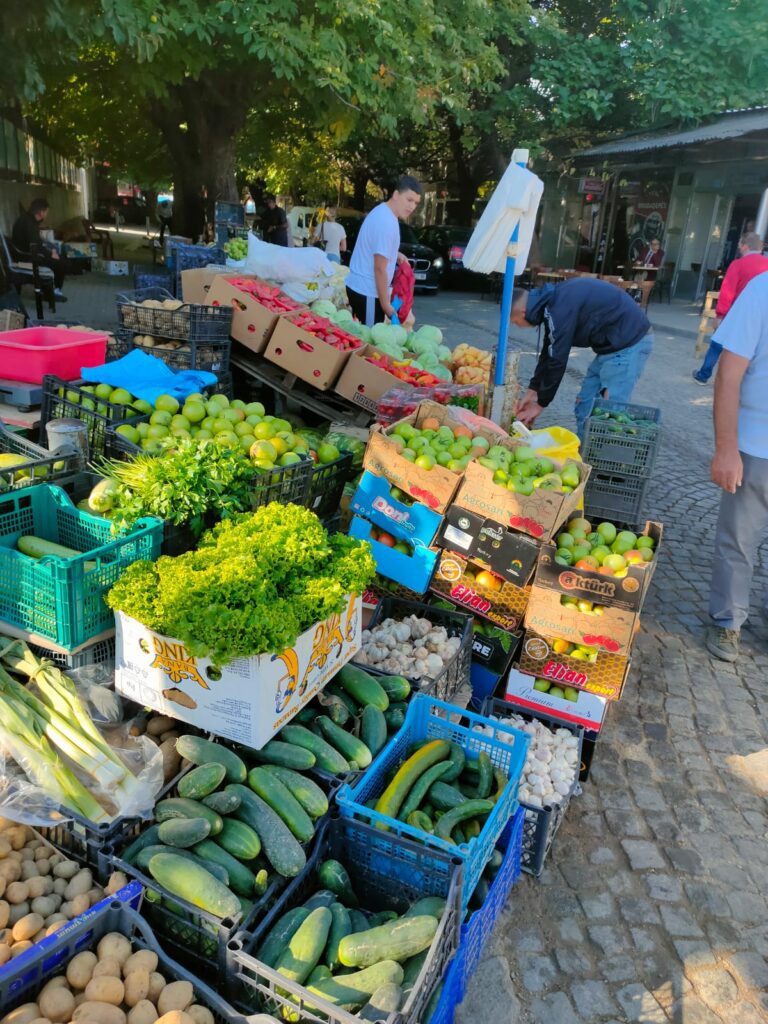
Now the most important part.
Next to the market, you will find the best kebab in Kosovo, for only 2 € a plate. Pristina has the best kebabs in the Balkans. You’ll know it’s the one by the line of people waiting.
Even if you’re full. Don’t miss it.
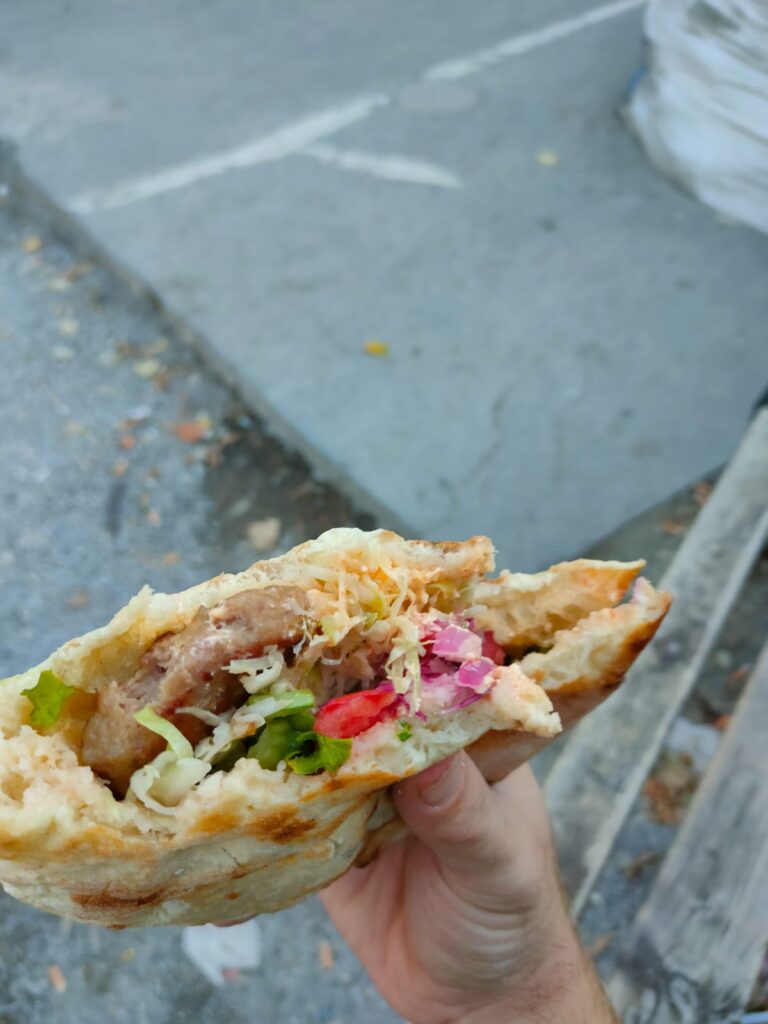
Try to Visit the Church of St. Nicolas
A wall surrounds the Serbian church. Through the gate is locked, you can see the modest orthodox architecture. Next to the church, we saw a policeman. We didn’t understand if he guards the parking lot in front of the church or the church itself. Either way, after telling him we were from Israel, he looked pleased and opened the gate for us.
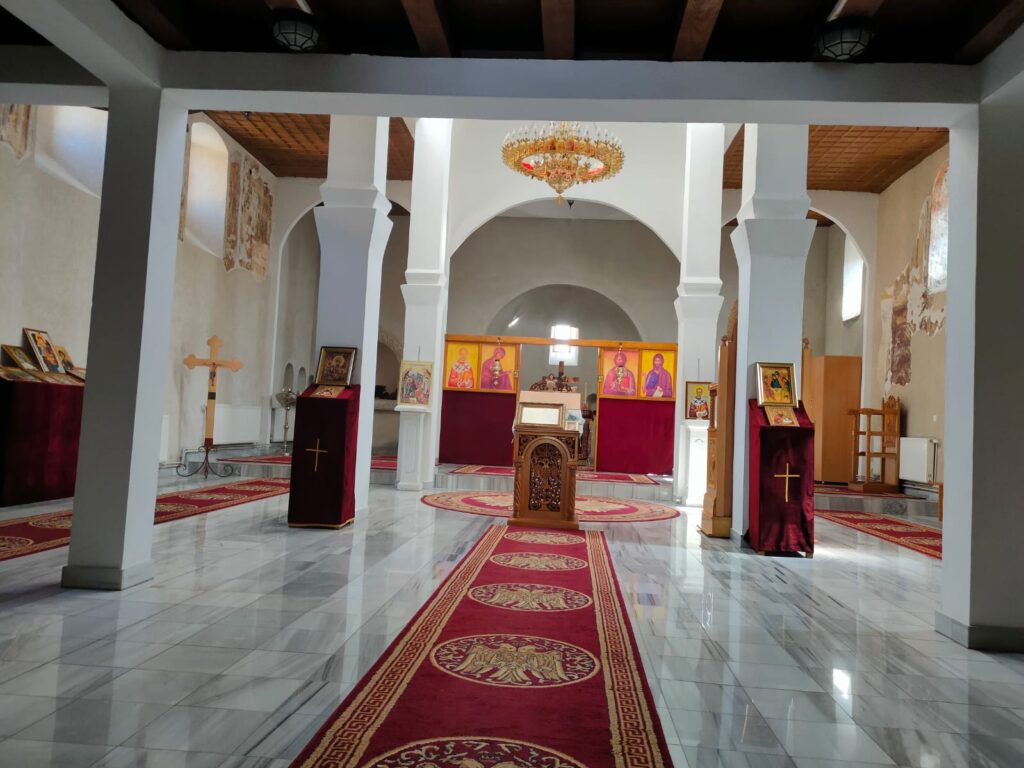
Serb-Kosovar relations are still very sensitive. Because of that, the church is not formally open for visitors, so if you want to see it put on your “active tourist hat.”
Inside the complex, Zoran, the Serbian father, opened the church’s doors for us. Zoran has been in Kosovo for eight years now. Together with his wife, he lives in the church’s complex. He was friendly and answered everything we asked.
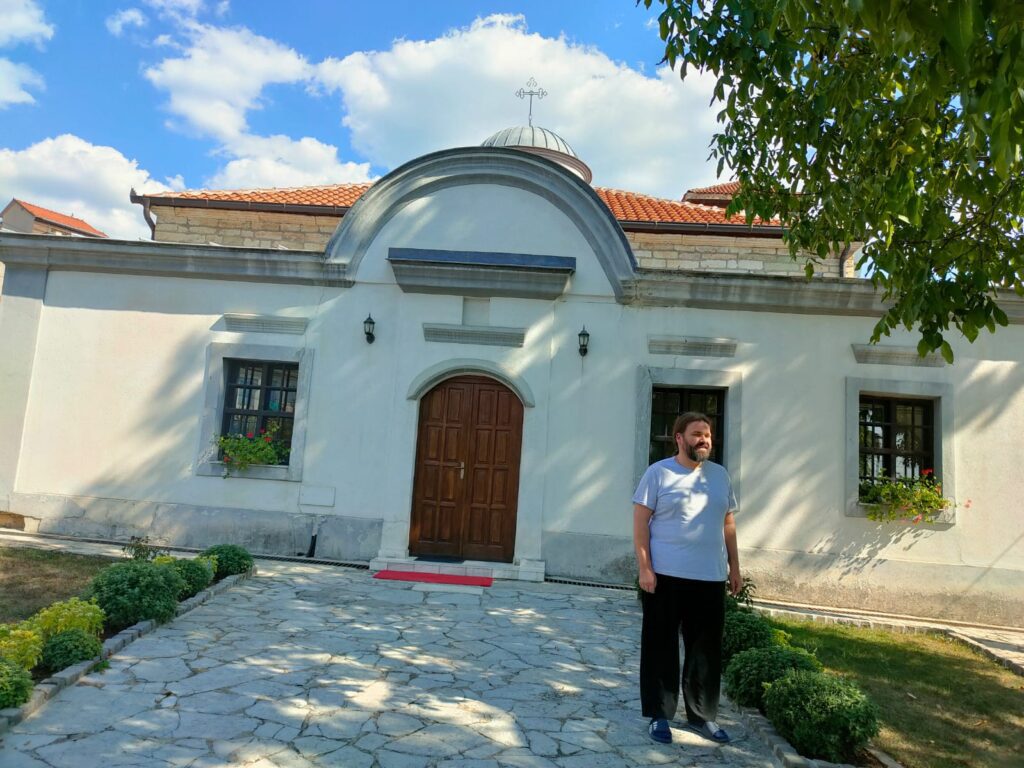
The church was built in the 19th century and stands beautifully with its original frescos. Unlike most orthodox churches, the iconostasis of the church is incomplete. In front of the altar, the central part of the iconostasis is wide open. Not because there was a service, but because the church was burned in 1999 and 2004 as an act of vandalism.
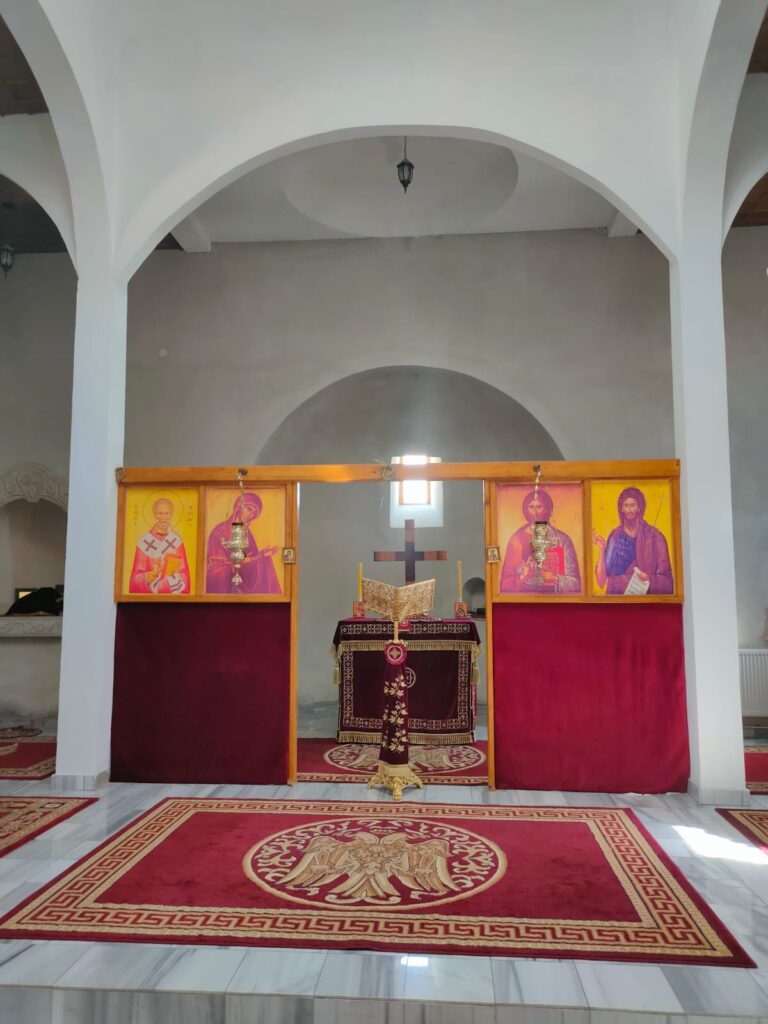
According to Zoran, the EU, who paid for the church’s restoration, decided to keep the remains of the iconostasis without restoring the central part.
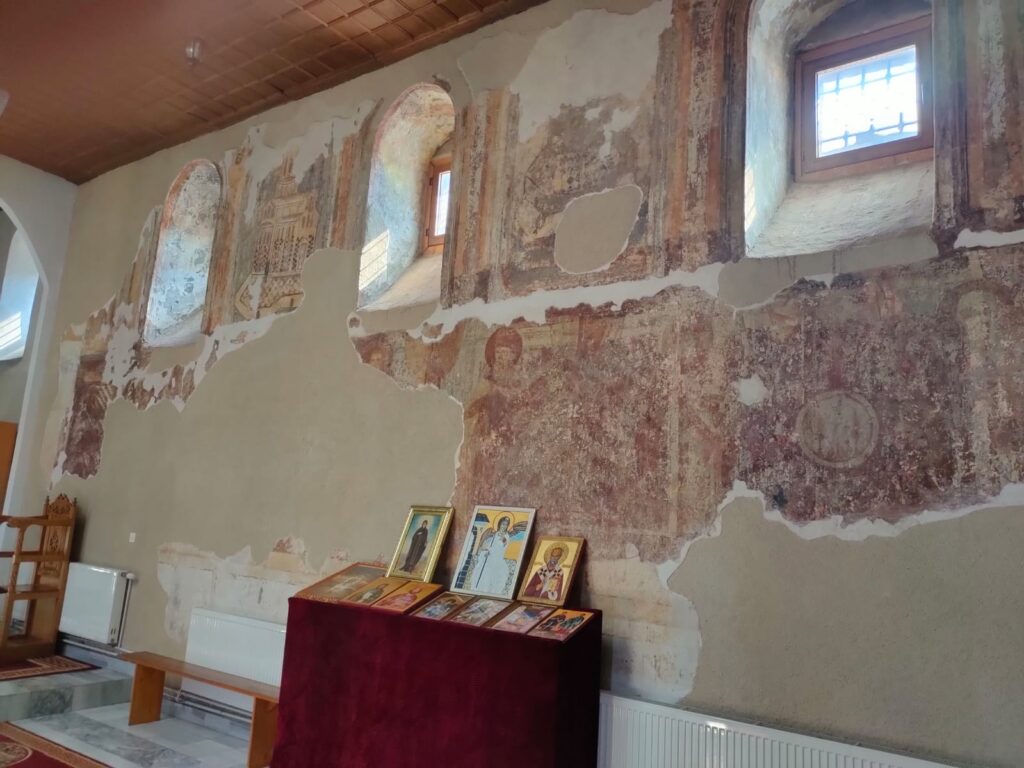
Some Thoughts About Our Experience in the Serbian Church
After talking to him for a bit and hearing about his life in Kosovo as a Serb, we found it liberating hearing and listening without taking sides. Neglecting the narratives and listening to the person and his experiences. After five months in the Balkans, we heard a lot about what the Albanians have to say about their Serbian neighbors and the other way around. The bad guy label is always there in every conversation moving from one country to another.
At last, with Zoran, we were able to stay objective.
We have to admit that the relationship between Serbian and Kosovars touched us because we are Israelis, and well, you know…
That’s one of the many advantages of slow traveling.
You have enough time to see your reflection in the world, handle it, and love it.
The Cathedral of Saint Mother Tereza
On the intersection of Bill Clinton Street and George Bush Street in the heart of Pristina lays the new sanctuary of St. Mother Teresa. The church is among Kosovo’s tallest and most impressive buildings, from the inside and out.
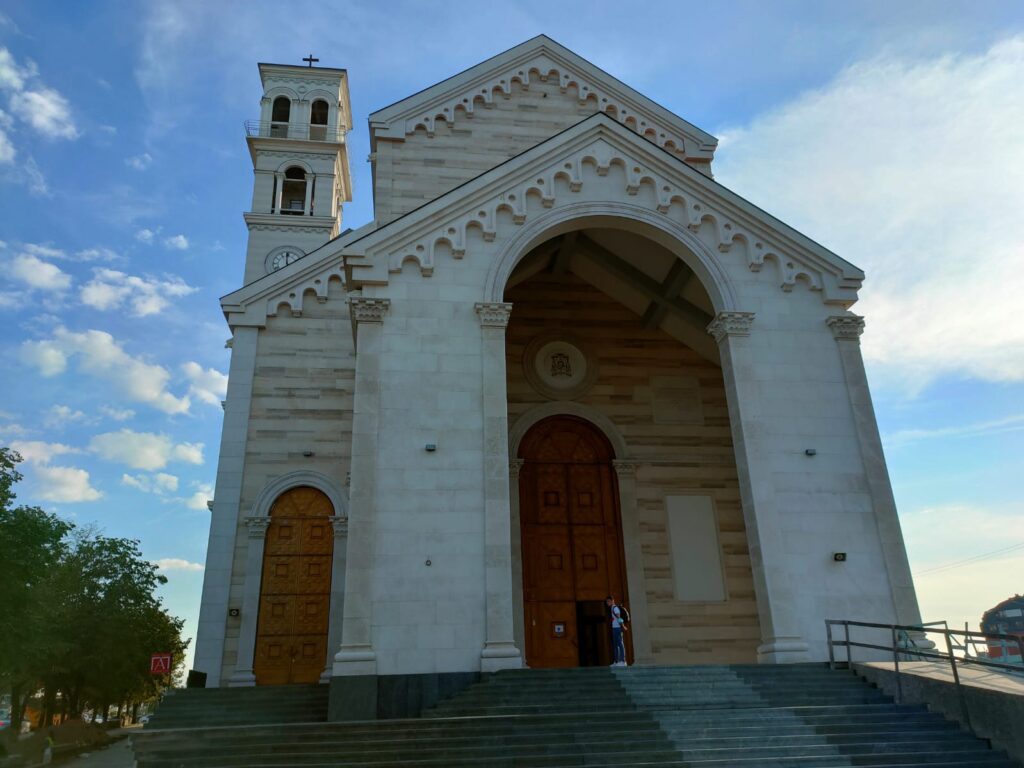
Mother Teresa is considered the most famous Albanian in human history. She was born in 1910 to Albanian parents in Skopje, now the capital of North Macedonia. At that time, Skopje was the capital of the Ottoman Turkish province of Kosovo.
The Ottoman Empire ruled Kosovo from the early 15th century until 1912, and most Albanians converted to Islam. But some Catholics remained.
Mother Teresa spent most of her life working in the slums of India, helping people with HIV, Leprosy, and Tuberculosis. She received a Nobel peace prize for her work in 1979.
She was Albanian as most Kosovars are, and the Catholics among them have especially anticipated the completion and blessing of the cathedral in their capital city, Pristina.
The cornerstone of the cathedral was laid in 2005 by Kosovo’s Muslim president, the legendary Ibrahim Rugova.
The church opened its doors to the public in 2010.
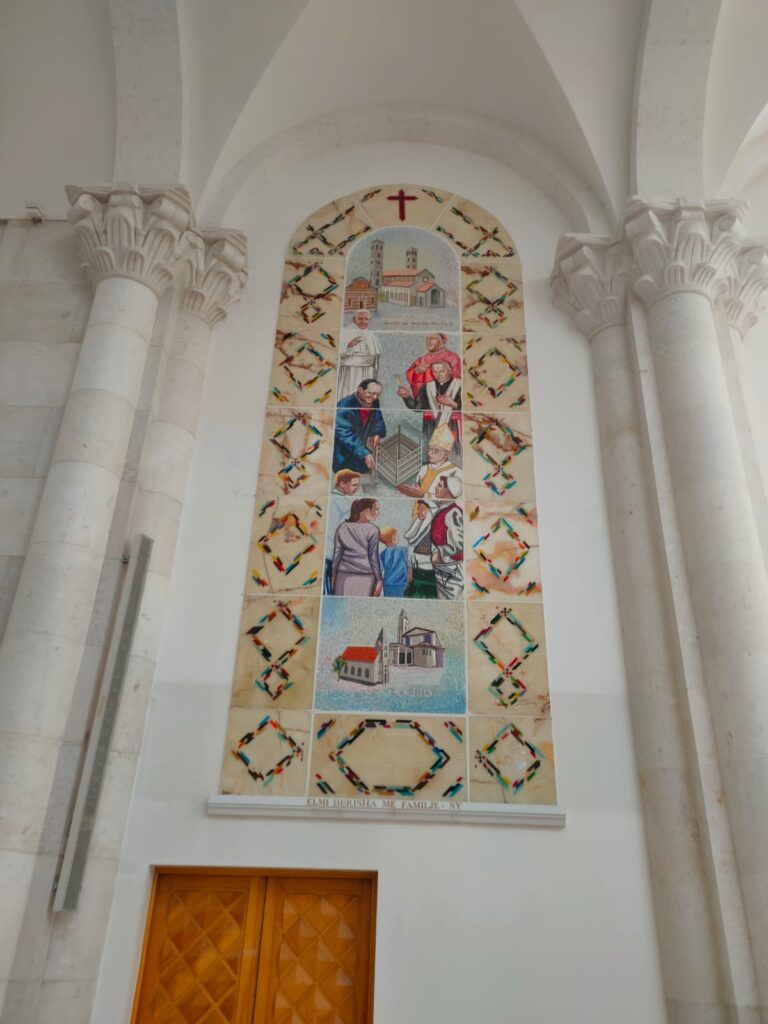
Though Kosovo has a Muslim majority, thousands of Christians and Muslims came together to celebrate the consecration of this nation’s first Roman Catholic cathedral.
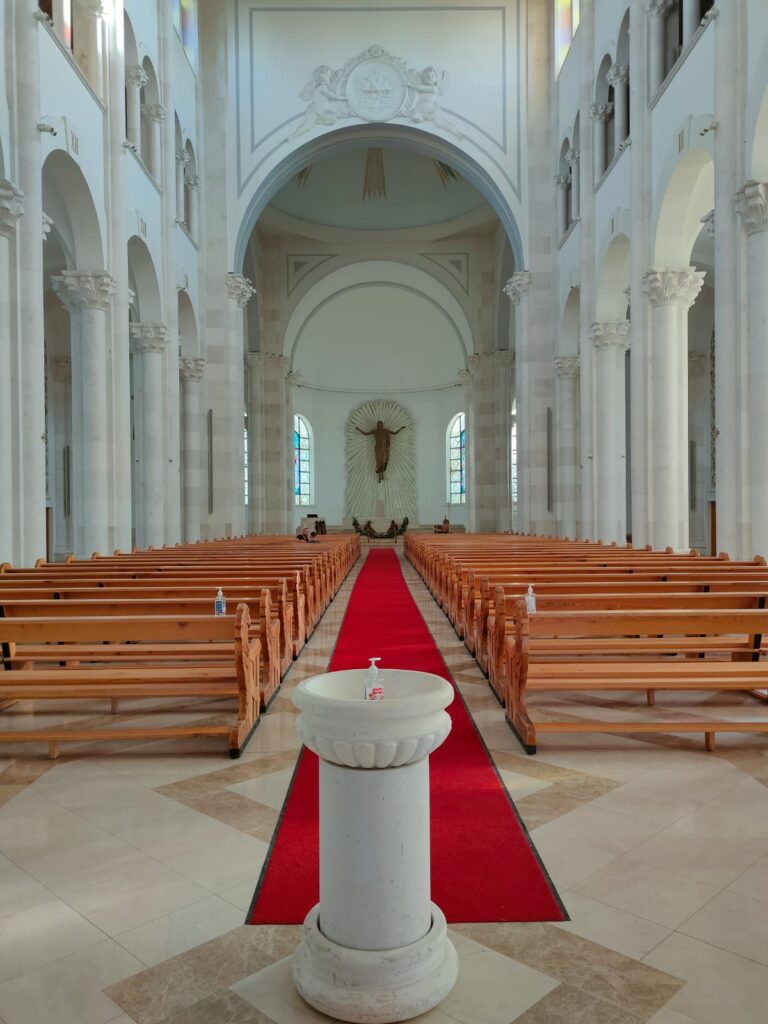
Our Experience
For us, it felt like the semblance of Kosovo and Pristina was embodied in that cathedral. It was uplifting to see how the new and the old can coexist together while each religion reacts with acceptance and respect to one another, not only formally, also in the streets and daily life. The city’s ancient, historical brick stone mosques are renovated next to the new, bright white cathedral. And the followers of each religion wish for the progress of the other. After all, they are all proud to be Kosovars.
Have Lunch at the Mezzeria
It was our best lunch in Pristina. It’s not a traditional Albanian Kosovar restaurant, and maybe that’s why we liked it so much. Mezzeria is a small bistro with a charming garden. They serve modern food with fresh Albanian products and an unpretentious attitude. The prices of the dishes are ridiculously low, and they even have a choice of a seven-course tasting meal for only 12€.
Pristina’s National Library
You cant complete a visit to Pristina without visiting one of the weirdest buildings in the world. Situated next to Pristina’s university, the library has a dystopian gothic design that will leave you speechless.
Seriously, it’s peculiar and unique.
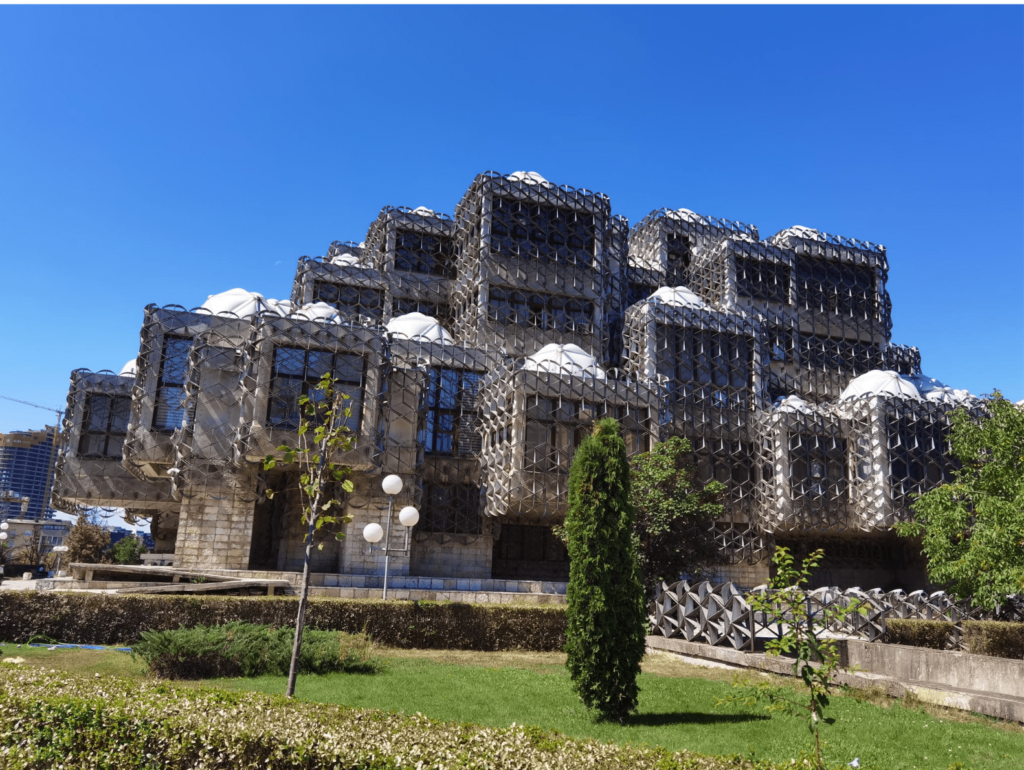
The building was completed in 1982 and designed in the brutalist style. The architecture is planned to showcase the conflict between tradition and modernism. designed by architect Andrija Mutnjaković.
Because of the pandemic, we could not get inside, but there are two million books in the library, and we heard it is a sight worth seeing.
Finish your Day at Dit e Nat
We arrived at the bar-cafe/ bookstore on a random afternoon and found it packed with a young Kosovar crowd. It was a lot of fun to hang out among the happy, beautiful people drinking with their friends or working on their computers. The atmosphere is really casual, but still, everybody is well dressed like there’s an alternative dressing code. As the name suggests, Dit e Nat is open day and night and serves good coffee in the morning and excellent cocktails at night. If you are lucky, you may catch a live music show from an up-and-coming artist making his first steps in sizzling Pristina. In addition, the bar serves as one of the spots for the growing alternative scene in the youngest country in Europe, a scene we couldn’t find in our trip to Albania.
What to Pack
What to pack to Prishtina?
You are probably in the middle of your trip through the Balkans, hiking, and trekking in the mountains, and you don’t have fancy clothes in your backpack. But a wise friend of mine once told me that you should always have a good pair of jeans and a nice shirt while backpacking because sooner or later you’ll reach a city.
So what if you came back from three days with no shower in Rugova Mountains? You can still be the prettiest boy/girl in the bar.
Like every big city, the best way to experience Prishtina is with your feet, so take off your hiking boots and put on some sneakers.
If you’re backpacking the Balkans, have the best backpack and a good daypack for your daily excursions. Like most Balkan cities, tap water in Prishtina is clean and safe to drink, so pack your water bottle.
At last, if you are a backpacking parent, like us, choose a baby carrier comfortable for your baby and yourself. Our baby is two years old, and we are still using the same carrier since he was born. In addition, if you decide to travel with a stroller, choose one that is no more than a backpack in size and weight (when folded).
Final Thoughts
Do you know those places on your trip where you expect nothing of them before you arrive, but then you fall in love with them? for us, Pristina was that place. We thought we’d just pass there on our way to Rugova canyon but ended up staying there for a week. There’s something about the energy of a young city that resembles the energy of a young child. Everything is new. Everybody is excited.
It may not be as beautiful as Paris or as posh as London. But if you’re an adventurist traveler looking for an unusual destination in Europe, then fly, drive, or walk to Pristina.
